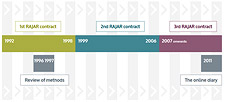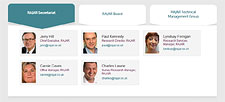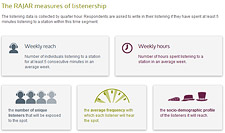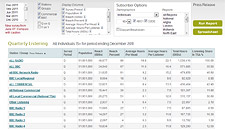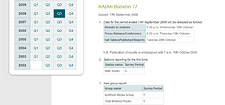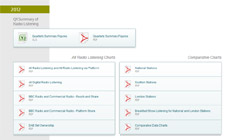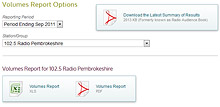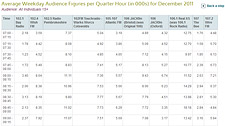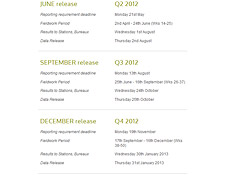Alternative methodologies
Outside of the UK, the predominant radio measurement methodologies are a similar diary-based system, a day-after-recall approach or a form of electronic measurement.
Recall Method
This could be referred to as the “what did you listen to yesterday/in the last few days?” approach. The participant or panel member is contacted by telephone, online or even in person and asked to recollect what they listened to previously. This method can be used as a sole form of measurement or as part of a hybrid system.
Electronic Measurement (EM)
Electronic measurement is used as the main audience measurement system in the major US markets, Scandinavia and some other European Countries e.g. Netherlands. It has also been introduced in a small number of other countries in parallel with the legacy methodology as a hybrid or fusion method including the UK. Electronic Measurement has two forms;
- Encoding - a watermarked signal/inaudible code is inserted into the broadcast audio, which the human ear cannot discern but the receiver device picks up and registers as listening or exposure.
- Audio Matching – a computer stores timed samples from available audio/radio services several times a minute. The data is then matched to audio samples captured by a device (e.g. a watch or phone) carried by a selection of panellists. Any matches above a set level of probability are deemed to be evidence of listening or exposure.


